Team GB’s Olympic Training Plans
Plus, Olympic training tips from the greats
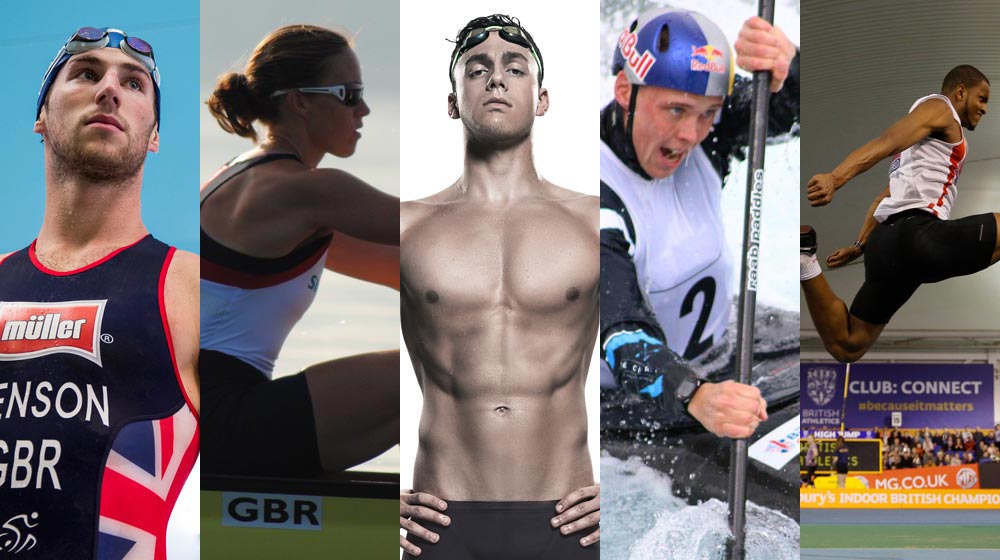
In This Series
- Olympic Training Tips from the Greats
- Track Cyclist Joanna Rowsell Shand
- Boxer Josh Kelly
- Swimmer James Guy
- Triathlete Gordon Benson
- Rower Helen Glover
- Triple Jumper Nathan Fox
- Slalom Canoeist Joe Clarke
- How To Train Like An Olympian
With the clock ticking down to the 2016 Olympic Games, we've been taking our preparation very seriously. The beers are chilling, the grab bags of tortilla chips have been purchased… heck, we’ve even put new batteries in the remote.
But if all that sounds exhausting, you should hear what Team GB’s medal hopefuls have been up to. We’ve interviewed some of Britain’s elite athletes to discover how they’ve been training ahead of one of the most important events of their lives.
RECOMMENDED: Eat Like an Olympian
From four-year training plans to overseas camps, it seems there’s no room for slacking if you want to be an Olympic champion. However, while we may not have 30 spare hours a week for training, there are a number of things we can learn from those on the road to Rio. Rest, a healthy diet and consistency play a big part in every athlete’s training plan, whatever their sport. We also picked up a number of Jedi mind tricks designed to get them in the zone and primed to win – we’ll be using them in our next spin class.
Click through the menu above for an in-depth look at how Team GB’s medal hopefuls have prepared, but continuing reading for assembled advice from 31 gold medal winners to push you to your own personal best.
Olympic Training Tips from the Greats
Get Elite Flexibility
Usain Bolt, 100m sprint, 2008, 2012
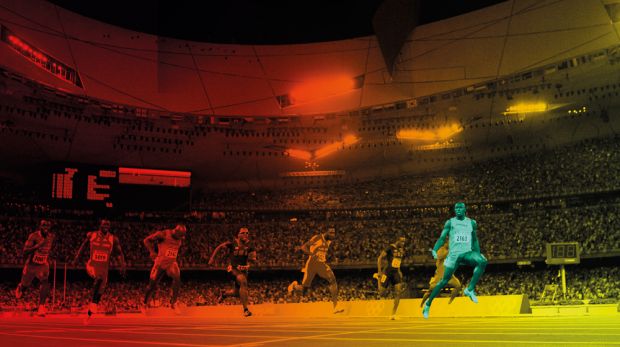
You can’t get his fast-twitch genetics, but – according to the man himself – there’s more to speed than that. “If you are training hard you must stay flexible,” says Bolt. “I told Cristiano Ronaldo this when I helped him with sprint training. If you are pushing your body to the limit but don’t stay flexible, it is eventually going to cause you problems. Find the flexibility exercises that work for you and for your sport, but make sure that you do them every day. When I have left training I will still find time to do extra flexibility training. Do it while you listen to music or watch TV – just make sure you do it.”
Anthony Joshua, Boxing, 2012
Alongside all the neck-harness training and 7am roadwork, Joshua brings one secret weapon to the ring: yoga. He mixes moves from the traditional Bikram style - the hot one - into his strength routine. Use the “camel” to open up your chest and stretch your pecs: start on both knees and reach one arm back to grab the ankle on the same side as you arch backwards, then switch sides. Too easy? Grab both ankles at once.
Get the Coach Newsletter
Sign up for workout ideas, training advice, reviews of the latest gear and more.
RECOMMENDED: Anthony Joshua's Boxing Tips and Training Advice
Kohei Uchimura, Gymnastics, 2012
“He has the flexibility, the body, the elegance… He is like a cat” is how Romanian gymnast Marian Dragulescu describes the 1.60m Uchimura, who won the world championships an unprecedented three times en route to Olympic triumph in the all-round category. And most coaches agree the one gymnastics stretch every man should mimic is the Jefferson curl. Stand upright holding an empty barbell or dumbbell, drop your chin to your chest, roll your shoulders forward, and - keeping your hips tucked under you - lower the bar as far as you can while curving your spine down from top to bottom. Pause for a few seconds, then curl your spine back up.
Build Explosive Power
James DeGale, Boxing, 2008
DeGale’s found post-Olympic success in the power-dominated world of pro boxing for a reason: his training combines technical work with drills designed to build knockout power. “Try fist-less shadowboxing,” he says. “Keep your hands up by your chin, but mimic the hip motion you’d use to throw jabs, uppercuts and hooks. By limiting the power you can generate from your arms, you’re forced to use your hips and legs to drive your punches.”
Jessica Ennis-Hill, Heptathlon, 2012
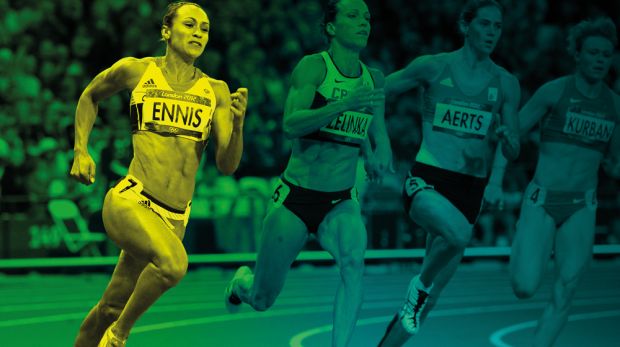
With seven events to consider, Ennis-Hill focuses on bang-for-the-buck exercises that build throwing, jumping and sprinting power. The hang clean – less technical than the full version – is her mainstay: hold a bar at knee height with your legs slightly bent, then drive upwards explosively and “catch” it at shoulder height. “I do four sets of three at 85-90% of my max,” says Ennis-Hill. If it’s good enough for her...
Ed McKeever, Canoe sprint, 2012
In canoe sprints, core control is king: it keeps you stable on the water, and lets you transfer full-body power to your arms. K-1 king “The Cleaver” McKeever recommends windscreen wipers to build rotational stability – and as a bonus, they’ll help to paddle-proof your shoulders. Hang from a pull-up bar, raise your legs, then lower them to one side and then the other, like a set of windscreen wipers. Too difficult with straight legs? Bend your knees slightly.
RECOMMENDED: Core Exercises
Jérôme Fernandez, Handball, 2012
Elite handball players like the French captain borrow the “string” drill from boxers to build co-ordination and fast-twitch movement. Mimic it to improve your punching and catching. Tie a string at roughly head height between a pair of posts, then duck under it using minimal head movement as you throw punches or balls.
Harness Top-Flight Speed
Michael Phelps, Swimming, 2004, 2008, 2012
With a five-hours-a-day in-pool schedule, Phelps spent his (limited) training time on dry land keeping things interesting. “I was doing a lot of training in a sort of old-school, Rocky-esque gym,” says Phelps. “One favourite was pushing a weighted sled down a beach – this makeshift shopping-cart-turned-sled thing.”
Andy Murray, Tennis, 2012
Murray’s been clocked at ten metres a second over ultra-short intervals, putting him on a par with Usain Bolt over an area the size of a tennis court. To build single-step explosiveness, he does box jumps and squats, keeping the reps low and the weights high. Oh, and his pull-up PB is 27, just in case you’re wondering what’s necessary for a 240km/h serve.
Greg Rutherford, Long jump, 2012
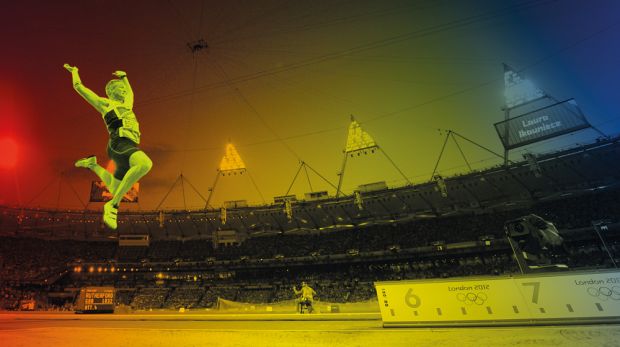
“If I’m running at top speed, five cubic tons of pressure passes through my joints when I take off,” says Rutherford, who’s aiming for his second gold in Rio. To take the pressure, he focuses on plyometrics and sprints: run as hard as you can for 30m, walk back and go again. Rutherford does 15 in a session but you can settle for ten.
Victoria Pendleton, Cycling, 2008, 2012
“I do deadlifts, trap bar deadlifts and cleans,” says Pendleton of the training that got her in winning shape for two Olympics. But unilateral training is just as important. “I do step-ups and Bulgarian squats to maintain leg strength without putting strain on my lower back.” Put one foot on a bench behind you, instep down, and squat until your front thigh’s parallel to the floor, with a dumbbell in each hand. Pendleton uses 32kg, in case you’re wondering.
Marlon Devonish, Sprint relay, 2004
Devonish used Olympic lifts to power his 10.06sec 100m, but for the less-experienced lifter jump squats provide similar stimulus, with minimal risk. Load a barbell with about 20% of what you can manage for a single back squat, then do three sets of five with it on your back, exploding as high as possible on each rep.
Lu Xiaojun, Weightlifting, 2012
At a bodyweight of 77kg, Xiaojun snatches 176kg overhead. Too spicy? At least try out his favourite shoulder-fix: the resisted dislocate. Tie a pair of resistance bands to a squat rack (or tree), stand with your back to them, and hold the ends while you do slow shoulder circles. Two sets of five each way will help to build pain-free rotator cuffs.
Achieve Next-Level Endurance
Andrew Hodge, Rowing, 2008, 2012
Like being strong? Hate cardio? Rowing is the answer: it’s a low-impact back-builder that’s good for a metabolism jolt in return for a mere few minutes of unpleasantness. “A beginner should do three five-minute bursts at medium resistance at around 26 strokes a minute,” says coxless four champ Hodge. “Focus on good technique: it goes legs, body, arms. Next try ten sets of ten power strokes, with 30 seconds of active recovery in between.”
RECOMMENDED: Rowing Machine Workouts
Rebecca Adlington, Swimming, 2008
Bored in the pool? Approach it like an interval run. “We don’t just swim lap after lap,” says Adlington of her 65km-a-week training pre-Olympic training. “I rarely did the same session twice. I’d do interval training at different distances – 50m, 100m, 200m, 400m – and mix up the strokes, or focus on going at a specific heart rate - say, 20bpm less than my maximum.”
Mo Farah, 5,000m and 10,000m, 2012
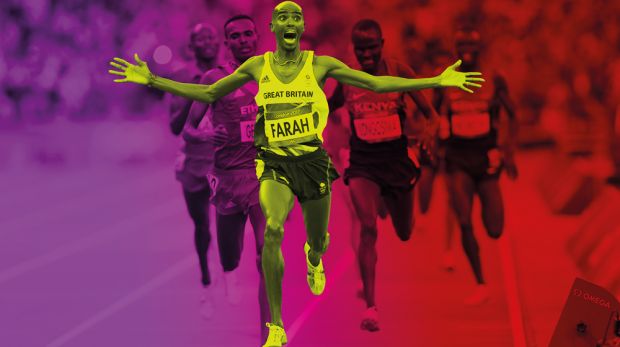
Farah runs up to 220km a week in training, doing two sessions a day on every day but Saturday. Most of them are recovery pace, with a tempo run and sprint intervals the notable exceptions. Try a cut-down version of his sprint session: 1.6km warm-up, 10x200m intervals at full speed (with a 200m recovery jog back), then a handful of hill sprints and another 1.6km warm-down.
Ed Clancy, Cycling, 2008
“Threshold” sessions induce shudders in most athletes. Designed to increase lactate tolerance, they do it by keeping the intensity at barely sustainable levels for chunks of time. Try a Clancy special: 15 seconds all-out, followed by 45 seconds at a moderate pace, repeated eight times. Rest for a few minutes, and repeat... twice. “It’s as ugly as a session gets,” says Clancy, “but it’s useful.”
RECOMMENDED: Exercise Bike Workouts
Alistair Brownlee, Triathlon, 2012
The hardest part of a 1,500m swim, 40km bike and 10km run? The jelly-legged minutes after the second transition, when your quads forget how to work. Brownlee has your solution. “Do overhead barbell lunges. If you have weak hips and glutes it’ll help you run, and holding the barbell overhead increases your stability.” A double shoulder-width grip is easiest: shift your hands in for an added core challenge.
Kurt Angle, Freestyle wrestling, 1996
“My gameplan was to be the best-conditioned wrestler at the Olympics and wear down the bigger, stronger heavyweights,” writes Angle in his autobiography. His secret weapon? Buddy carries. “I’d carry my manager: piggyback, then in front of me, the way you would carry your wife, and sometimes fireman style. I’d do ten of each, every day.” Try it once a week.
Matthew Pinsent, Rowing, 1992, 1996, 2000, 2004
Once the basics are sorted, you’ll want to attempt a 2,000m row – the Olympic distance. Seven minutes is the standard, and Pinsent has your pacing strategy. “Go off at 1min 41sec pace [your 500m time] for 30sec, settle to 1:45, maybe flicking 1:46. Fight like hell not to see 1.47 in the third 500m and sprint if you can. It’s 800-1,400m that gets you - get your head around that and you’re home.” Spoiler: it won’t be any fun.
Develop the Will to Win
Chris Hoy, Cycling, 2004, 2008, 2012
How do you get to be Britain’s greatest Olympian? Keep it simple. “Team GB’s cycling performance manager gave me an envelope he’d written on that said ‘WORK, REST, DIET’ and as he passed it to me he just said, ‘Enjoy’,” says Hoy. “You’ve got to get the work done, you have to rest to let your body recover from it and you have to eat well and look after your diet. It sounds ridiculously simple but if you take care of those three elements you can’t help but be successful. And by ‘enjoy’ I think he means enjoy the whole process of doing it.”
Bradley Wiggins, Cycling, 2012
Apart from an ability to pace his efforts that comes from two decades of experience, Wiggins’s mental consistency is (partly) thanks to Team GB psychologist Steve Peters. According to Peters, the key to victory is taming your inner chimp, the part of your brain that reacts badly when things go wrong. You can’t beat the chimp, but you can let it have its say, then react with logic and emotion. Wiggins used the mantra “cool and calm” to maintain control at London 2012: do the same at your next big meeting.
Ben Ainslie, Sailing, 2000, 2004, 2008, 2012
Ainslie bagged a silver as a teenager in 1996, but it’s been straight gold ever since – though he’s bowing out of Rio in favour of an attempt at the America’s Cup. He thinks in terms of the things he can control, not the silverware. “I always set performance goals,” he says. “I have long-term goals that might stretch two to four years ahead, but I also have yearly goals, as well as fitness and financial goals, like how much money I need to bring in to make the whole thing happen.”
Chris Boardman, Cycling, 1992
The man known as “The Professor” keeps it logical. “Being able to cope with the situation is very important. You can have the best physical capability in the world but if you can’t [use it] at a given moment then you’re not going to maximise your potential.”
The way most people learn how to do that, says Boardman, is to fail, and learn from that failure. “My psychologist and friend John Sire was sitting with me, the hour before my Olympic race. He said, ‘What is it that scares you? What is it that worries you?’ We battled through lots of stuff and in the end I just said, ‘Sod it. I’m just going to be as good as I can be and see where it’ll get me.’ He just looked at me and smiled, in that way psychologists do.”
Boardman describes what Sire had given him as his anchoring thought. “He got me to talk myself back to the point where I realised that was all I could do and to focus on that.”
Jade Jones, Taekwondo, 2012
Jones will be defending her title – the UK’s first ever taekwondo gold – in Rio, but after a lacklustre performance at the world championships 12 months after London 2012, her enthusiasm was waning. Coach Paul Green had the advice she needed. “He said, ‘Listen Jade, where’s your medal?’ I was like, ‘What do you mean? It’s at the side of my bed.’ He said: ‘No matter if you lose now, it’s still going to be there.’ I had been thinking, ‘I’ve got to win because I’m Olympic champion’. Actually, no, it’s ‘I’m an Olympic champion for life’ – I can just enjoy the rest. I should be making them nervous, not the other way round. I changed my whole attitude.”
Nicola Adams, Boxing, 2012
The first ever female boxing gold medallist knows there’s pressure on her to perform - and embraces it. “I like to use the pressure to my own advantage. Instead of thinking, ‘Everybody wants me to win, they think I’m going to win gold, what am I going to do if I lose?’, I try not to think about that.’ Instead, Adams focuses on the positive. “I get in the ring and think, ‘You know what, everybody thinks that I can win this gold and I’m going prove I can do it’. That’s all you can do.”
Unlock Elite-Level Strength
Ryan Lochte, Swimming, 2004, 2008, 2012
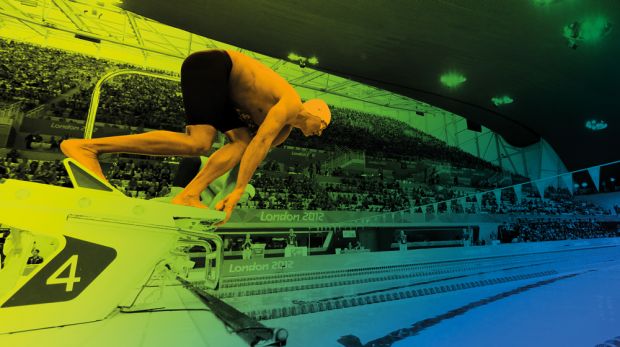
Lochte’s off-season involved plyometrics, injury-proofing and – just to keep things interesting – strongman training. Mimic him with the farmer’s carry. Grab the heaviest set of dumbbells your gym has to offer, walk 20m holding them by your sides, rest for a minute and repeat four times.
Ilya Ilyin, Weightlifting, 2008, 2012
Lifting in the under-94kg class, Ilyin boasts a monstrous 437kg total – enough for the world record as well as two golds. The Klokov press, named after his friend and sometime-seminar buddy Dmitriy Klokov, is a mainstay of his training, and it’ll improve your shoulders too. Hold a barbell behind your neck with a wide grip, squat slightly, then drive up and use the momentum to press the bar overhead. Go for three sets of eight.
Aleksandr Karelin, Greco-Roman wrestling, 1988, 1992, 1996
“I train every day of my life as they have never trained a day in theirs,” was Karelin’s official explanation for strength that literally terrified opponents. Many preferred to give up rather than face the full-body throw that became known as the Karelin Lift. His secret weapon was the Zercher squat: hoist a barbell in the crook of your elbows to test your core, arms and back.
Kosei Inoue, Judo, 2000
Inoue, who’s widely regarded as one of the best judoka ever, combines strength, balance and core control for his signature uchi-mata shoulder throw. Build all three at once with the uchi-mata press-up: start the move as normal, but bring one foot off the ground and upwards as you lower yourself. Change legs with each rep.
Sergey Litvinov, Hammer throw, 1988
One of Russia’s all-time hammer-throwing greats gives his name to the Litvinov conversion, a workout that involves a heavy lift followed by a sprint – repeated three times. Litvinov did it with the front squat followed by a 400m dash, but strength coach Dan John suggests 20 kettlebell swings and a hill sprint.
RECOMMENDED: Why You Should Train Like Russian Hammer Thrower Sergey Litvinov

Charlotte Thomas is a freelance journalist and health and fitness blogger at Lunges & Lycra.
